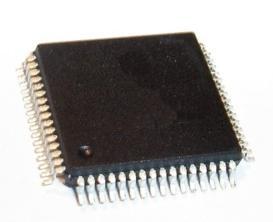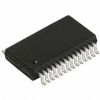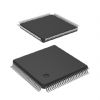Features: 18-Mbit density (2M x 8, 2M x 9, 1M x 18, 512K x 36)
300 MHz clock for high bandwidth
4-word burst for reducing address bus frequency
Double Data Rate (DDR) interfaces (data transferred at 600 MHz) at 300 MHz
Two input clocks (K and K) for precise DDR timing
❐ SRAM uses rising edges only
Two input clocks for output data (C and C) to minimize clock skew and flight time mismatches
Echo clocks (CQ and CQ) simplify data capture in high-speed systems
Synchronous internally self-timed writes
DDR-II operates with 1.5 cycle read latency when the DLL is enabled
Operates similar to a DDR-I device with 1 cycle read latency in DLL off mode
1.8V core power supply with HSTL inputs and outputs
Variable drive HSTL output buffers
Expanded HSTL output voltage (1.4VVDD)
Available in 165-Ball FBGA package (13 x 15 x 1.4 mm)
Offered in both Pb-free and non Pb-free packages
JTAG 1149.1 compatible test access port
Delay Lock Loop (DLL) for accurate data placement
SpecificationsExceeding maximum ratings may impair the useful life of the device. These user guidelines are not tested.
Storage Temperature ...........................65°C to +150°C
Ambient Temperature with Power Applied10°C to +85°C
Supply Voltage on VDD Relative to GND......0.5V to +2.9V
Supply Voltage on VDDQ Relative to GND.....0.5V to +VDD
DC Applied to Outputs in High-Z ......0.5V to VDDQ + 0.3V
DC Input Voltage [11]........................ 0.5V to VDD + 0.3V
Current into Outputs (LOW) ......................................20 mA
Static Discharge Voltage (MIL-STD-883, M 3015).... >2001V
Latch up Current..................................................... >200 mADescriptionThe CY7C1317CV18, CY7C1917CV18, CY7C1319CV18, and CY7C1321CV18 are 1.8V Synchronous Pipelined SRAMs equipped with DDR-II architecture. The DDR-II consists of an SRAM core with advanced synchronous peripheral circuitry and a two-bit burst counter. Addresses for read and write are latched on alternate rising edges of the input (K) clock. Write data is registered on the rising edges of both K and K. Read data is driven on the rising edges of C and C if provided, or on the rising edge of K and K if C/C are not provided. Each address location is associated with four 8-bit words in the case of CY7C1317CV18 and four 9-bit words in the case of CY7C1917CV18 that burst sequentially into or out of the device. The burst counter always starts with a '00' internally in the case of CY7C1317CV18 and CY7C1917CV18. For CY7C1319CV18 and CY7C1321CV18,the burst counter takes in the least two significant bits of the external address and bursts four 18-bit words in the case of CY7C1319CV18, and four 36-bit words in the case of CY7C1321CV18, sequentially into or out of the device.
Asynchronous inputs of CY7C1317CV18, CY7C1917CV18, CY7C1319CV18, and CY7C1321CV18 include an output impedance matching input (ZQ). Synchronous data outputs (Q, sharing the same physical pins as the data inputs, D) are tightly matched to the two output echo clocks CQ/CQ, eliminating the need to capture data separately from each individual DDR SRAM CY7C1317CV18, CY7C1917CV18, CY7C1319CV18, and CY7C1321CV18 in the system design. Output data clocks (C/C) enable maximum system clocking and data synchronization flexibility.
All synchronous inputs of CY7C1317CV18, CY7C1917CV18, CY7C1319CV18, and CY7C1321CV18 pass through input registers controlled by the K or K input clocks. All data outputs of CY7C1317CV18, CY7C1917CV18, CY7C1319CV18, and CY7C1321CV18 pass through output registers controlled by the C or C (or K or K in a single clock domain) input clocks. Writes are conducted with on-chip synchronous self-timed write circuitry.

 CY7C1317CV18 Data Sheet
CY7C1317CV18 Data Sheet







